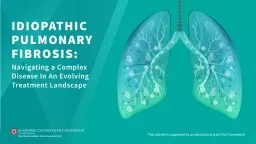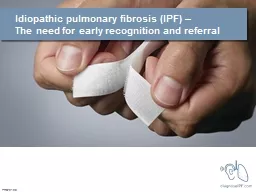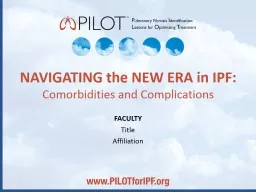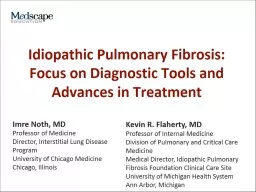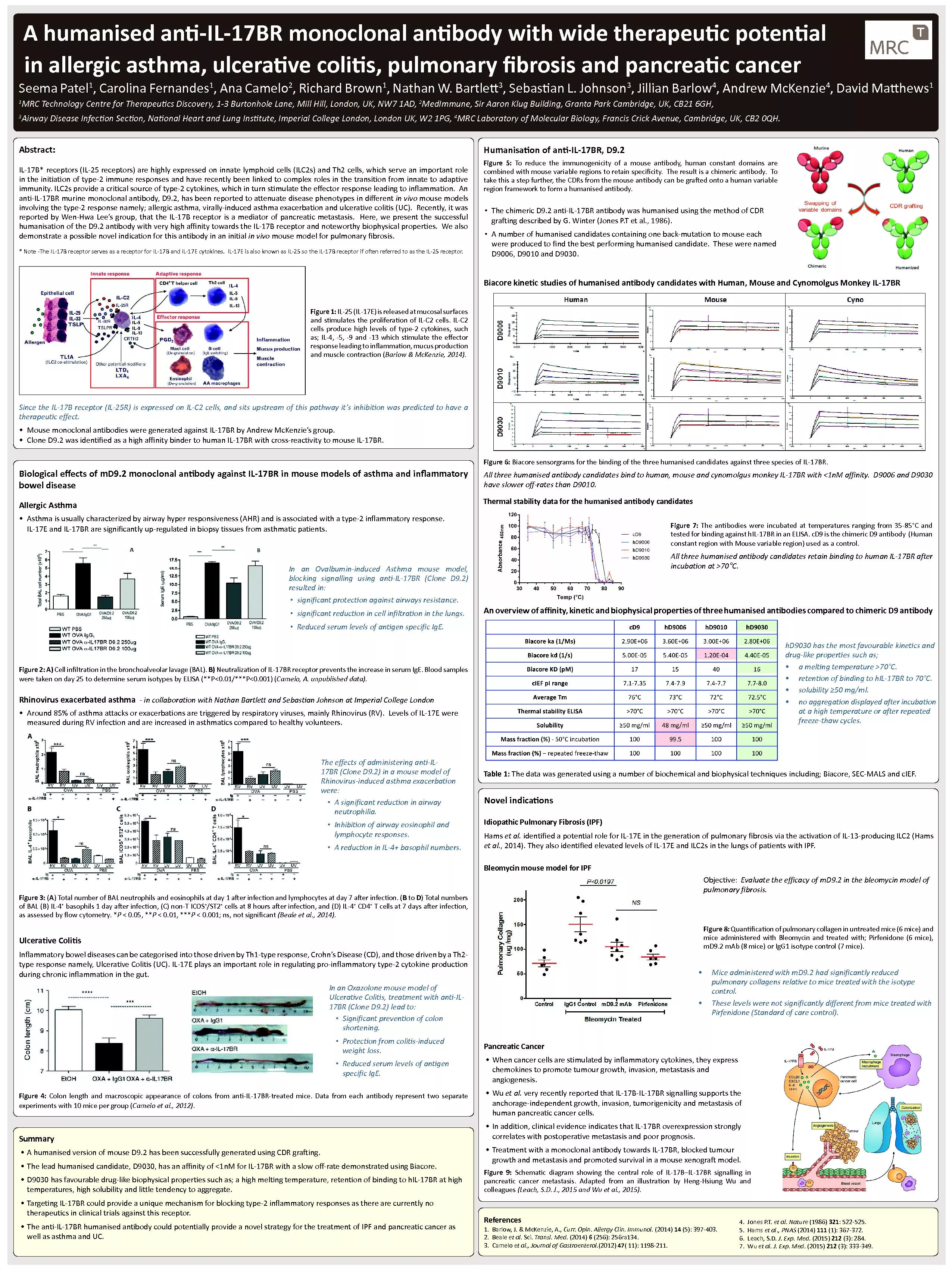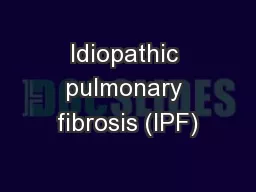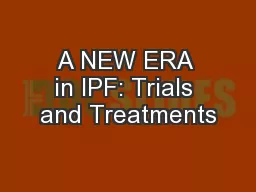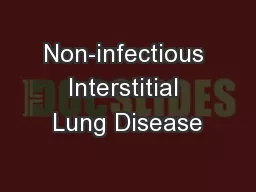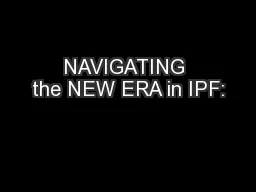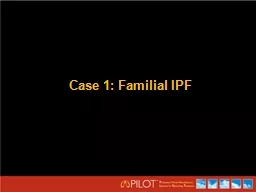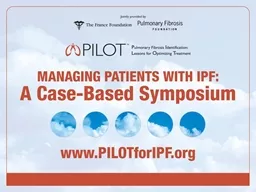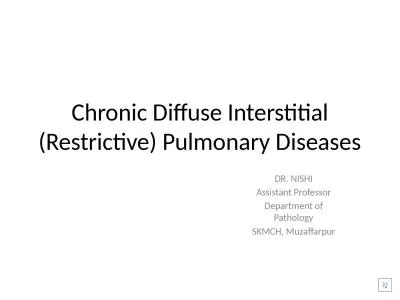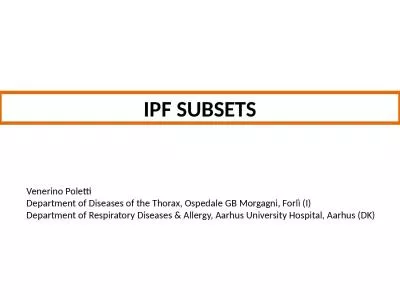PPT-Burden of Disease In this module, we review the definition of idiopathic pulmonary fibrosis
Author : natalia-silvester | Published Date : 2019-06-23
Current Definition of IPF IPF Specific form of chronic progressive fibrosing interstitial pneumonia of unknown cause Limited to the lungs Occurs primarily in older
Presentation Embed Code
Download Presentation
Download Presentation The PPT/PDF document "Burden of Disease In this module, we rev..." is the property of its rightful owner. Permission is granted to download and print the materials on this website for personal, non-commercial use only, and to display it on your personal computer provided you do not modify the materials and that you retain all copyright notices contained in the materials. By downloading content from our website, you accept the terms of this agreement.
Burden of Disease In this module, we review the definition of idiopathic pulmonary fibrosis: Transcript
Download Rules Of Document
"Burden of Disease In this module, we review the definition of idiopathic pulmonary fibrosis"The content belongs to its owner. You may download and print it for personal use, without modification, and keep all copyright notices. By downloading, you agree to these terms.
Related Documents

